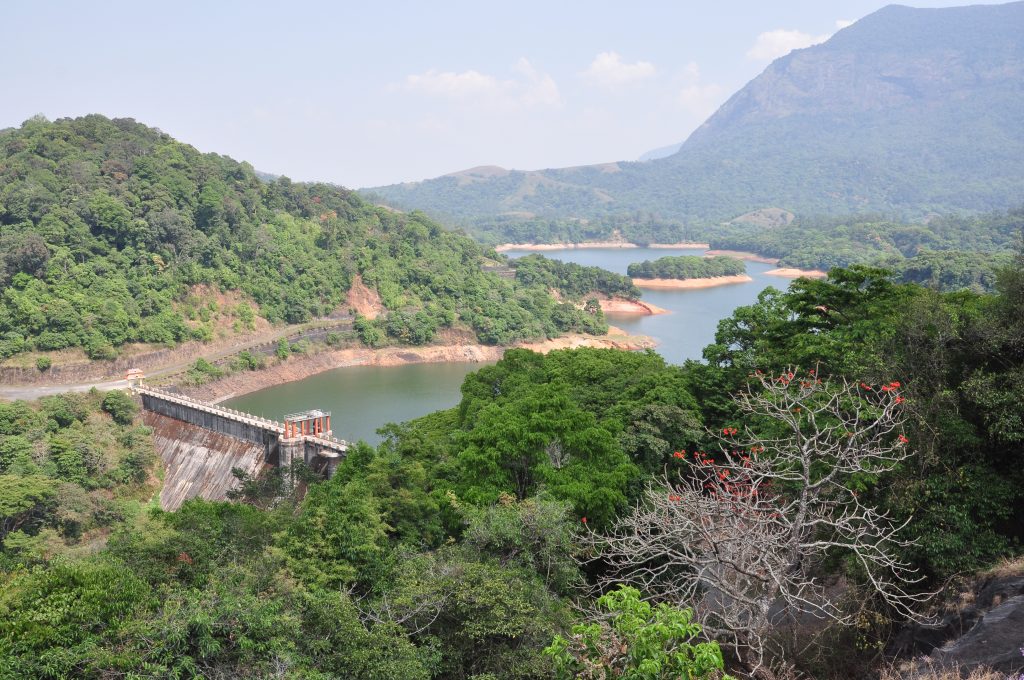
With Siruvani level reduced, Coimbatore loses world's 2nd tastiest water
With the Kerala government’s move to reduce the maximum water storage level at Siruvani reservoir, Coimbatore is slowly losing out on the “world’s second tastiest drinking water”, which was once the only source of drinking water for the district.

With the Kerala government’s move to reduce the maximum water storage level at Siruvani reservoir, Coimbatore is slowly losing out on the “world’s second tastiest drinking water”, which was once the only source of drinking water for the district.
Following two subsequent floods in 2018 and 2019, the state government in Kerala has decided to reduce the maximum storage level in all its reservoirs, including in Siruvani. According to sources, the government has decided to reduce the maximum storage level of reservoir by five feet from 49.53 ft.
“The reservoir’s sluice gates were never opened even when it reached the full capacity and overflowed. But, citing the incessant rainfall in the last two years, the state government has started opening its sluice gates once it reached the full reservoir level, resulting in floods in nearby villages,” said a Tamil Nadu Water Supply and Drainage (TWAD) official.
The Kerala government has also cited the damages caused due to floods in the bordering villages in 2018 and 2019 while justifying the move of reducing the reservoir capacity. “If Kerala opens the sluice gates of the reservoir at 44 feet, we will have to reduce the quantity of water that we draw from it,” said the Tamil Nadu official.
ALSO READ | Dry spells and floods leave Kerala farmers clueless on future
According to sources, Tamil Nadu has been drawing around 101.4 million litres per day (MLD) from the reservoir on normal days. “During summers, we reduce the quantity of water being drawn from the reservoir and increase the interval of water supply to those residing under Coimbatore Corporation,” they said.
However, now after the maximum capacity was reduced, the TWAD too brought down the quantity of water being drawn to 90 MLD, of which about 83 MLD is supplied to the corporation limit. The rest is being supplied to the villages in the outskirts of the city.
When asked about it, a Kerala PWD official said that the move was not just for one dam but all the dams in the state. “The move was initiated considering the safety of the dam and those living in the low lying areas surrounding the dam. We have assured the Tamil Nadu government that we would maintain the dam level at 44 feet,” the official said.
Though the decrease in water level will not have any serious impact on drinking water supply, the very purpose of constructing the dam has now become a question. “However, after the district faced severe drought, the state government took alternate measures and linked all the places with Pillur and Athikadavu drinking water supply pipeline, except nine wards in the corporation limit,” sources said.
The Siruvani drinking water scheme was pitched by Congress member SP Narasimhalu Naidu in 1889 after his visit to the Siruvani hills and Muthikulam falls. He had then submitted a proposal to bring the water downwards using gravity.
ALSO READ | Yediyurappa writes to PM Modi to clear Mekedatu project
But, the project got shape 40 years later in 1929, when CS Rathinasabapathy Mudhaliyar became the chairman of Coimbatore municipality. On April 29, 1929, about 110 drinking water pipes were set up and six water connections were given to the people in the Race Course and later in RS Puram. When the project was expanded to the entire city, about 60 wards in the city limit and over 10 villages on the outskirts were supplied with the Siruvani water.
However, after the city was hit with severe drinking water crisis in 2013-14, the city municipal corporation decided to link Pillur and Athikadavu drinking water schemes along with Siruvani water. And it was the first time the city that once boasted of having the world’s second tastiest drinking water, started losing it.
Now, about 25 wards and few villages in the rural parts of the city alone are receiving pure Siruvani water. But after the flow from Siruvani is reduced, that too will be mixed with Pillur and Athikadavu waters.
Explaining the significance of Siruvani water, historian M Shanmugavel said that the only purpose of building was to meet the drinking needs of Coimbatore. “Even if the sluice gates of the dam are opened, the outflowing water is not going to be used. It will find its way back to the Bhavani River,” he said.
On the state government citing safety reasons behind the move, he said, “Safe maintenance of the dam is the responsibility of the Kerala government, for which the Tamil Nadu government pays them every year.”

